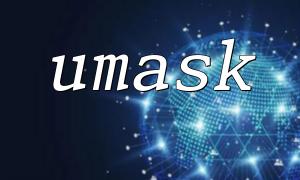<span><span><span class="hljs-meta"><?php</span></span><span>
</span><span><span class="hljs-comment">// This part of the code is unrelated to the article content, purely a placeholder example</span></span><span>
</span><span><span class="hljs-keyword">echo</span></span><span> </span><span><span class="hljs-string">"This article explores the differences in the behavior of the umask function in PHP across different environments."</span></span><span>;
</span><span><span class="hljs-meta">?></span></span><span>
<p><hr></p>
<p>In PHP, the <code>umaskThis ensures that subsequent file and directory creations have the expected permissions.
Be aware of the difference between default file and directory permissions
Directories typically require execute (x) permission to be accessed. The umask mask affects both file and directory permissions.
Consider server security policies
The umask is only one part of permission control. Server ACLs and security modules can also influence permissions, so a comprehensive approach is needed.
In essence, the umask function in PHP acts as a “mask” for file permissions. Differences in its behavior on Linux servers arise from a combination of execution environment, system configuration, and security policies. Understanding the principle of umask and using it correctly can help developers control file permissions more precisely in different environments, improving both system security and collaboration efficiency.
<span></span>







